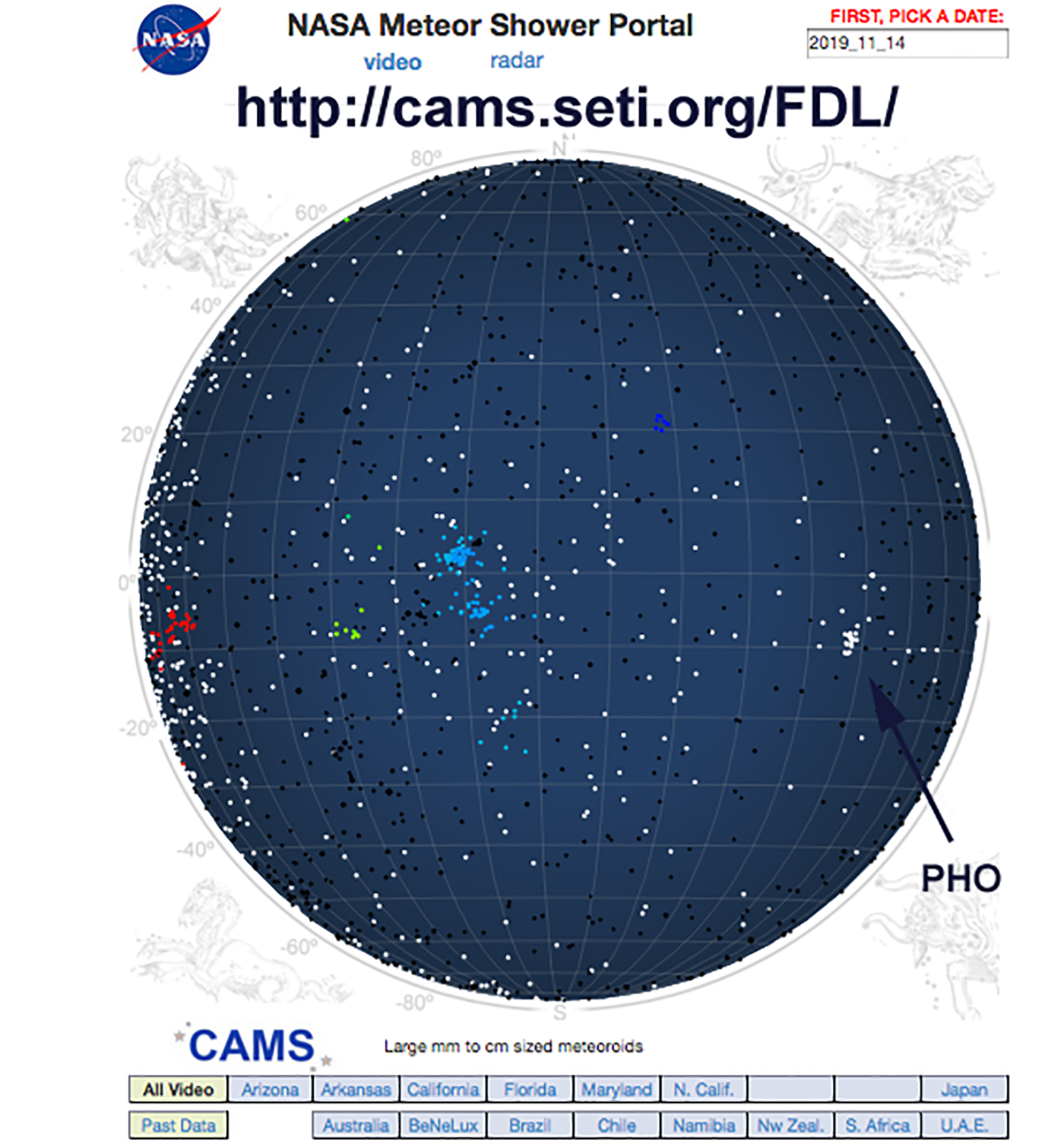
This message was just issued as a CBET #4698
Phoenicid Meteors 2019
P. Jenniskens, SETI Institute and NASA Ames Research Center, reports the detection of an on-going meteor outburst in low-light video observations from several CAMS networks. Based on the 18 meteors detected by the CAMS Chile network on Nov. 12 – 14 (operated by S. Heathcote and T. Abbott of AURA/Cerro Tololo and E. Jehin of the University of Liege/La Silla Observatory) , the meteors radiated from the median geocentric radiant coordinates R.A. = 7.3 +/- 0.4 deg., Decl. = -6.9 +/- 0.4 deg. at a geocentric velocity 11.8 +/- 0.5 km/s during solar longitude 229.1 to 231.6 deg. (equinox J2000.0). The median orbital elements are q = 0.935 +/- 0.002 AU, e = 0.75 +/- 0.04, i = 2.89 +/- 0.16 deg., Peri. = 28.6 +/- 0.4 deg., Node = 50.7 +/- 0.2 deg., longitude of perihelion (L) = 79.1 +/- 0.4 deg. The outburst was also detected by most other CAMS networks, and seen again during the past day (Nov. 15).
The shower appears to originate from Jupiter family comet 289P/Blanpain, parent body of the Phoenicids (IAU shower 254, PHO). The comet will evolve into an orbit similar to the observed meteoroids after a close encounter with Jupiter in 2055 (see information posted at website URL https://jcometobs.web.fc2.com/pcmtn/0289p.htm). The current comet orbit has q = 0.959 AU, e = 0.685, i = 5.90 deg., Peri. = 9.84 deg., Node = 68.92 deg., and L = 78.76 deg. P. Jenniskens and E. Lyytinen (2005, A.J. 130, 1286) calculated that meteor activity from the breakup of Blanpain in A. D. 1819 was expected in 2019, now confirmed, and may again be seen in 2034 and 2039.





